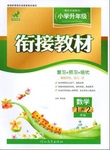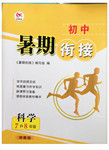
B
 Taiwan Flood and Typhoon Relief 88 Free Concerts & Auction Nights
Taiwan Flood and Typhoon Relief 88 Free Concerts & Auction Nights
On August 8, 2009, Taiwan suffered from the hit of Typhoon Morakot, which caused a great loss of lives and damage. This was the worst typhoon to hit Taiwan in half a century and it hit the island's southern and eastern areas, dumped more than 80 inches of rain on the island and stranded thousands of villagers in mountainous areas. Taiwanese Student and Alumni Associations from many schools in the Greater New York area are sponsoring two charity concerts and auctions(拍卖) to help with fund raising for the reconstruction in Taiwan.
� Two charity concerts/ auctions:
� Thursday, August 27, 2009
� 5:00 pm Enter; 5:30 pm Begin
� Taipei Economic and Cultural Office in New York, 1 East 42nd Street (5th Avenue), New York, New York 10017
� Sunday, August 30, 2009
� 3:00 pm Enter; 3:30pm Begin
� Overseas Chinese Culture Center of TECO in New York, 133-32, 41st Road, Flushing, New York 11355
� Charity Programs:
“Love and Hope”; “I Pray”; “Hand in Hand”; “NYC Floating”… For more program information of the concerts, please click here.
� Donation Information
� For questions or if you’d like to perform (any form acceptable), work as a volunteer and donate money or artwork for auctions, please email:
� Email: Taiwan.Charity@gmail.com
� Tel: Call 646-460-1739 Mr. Shang
� For donation or more information, you can also visit the following web sites:
� http://sites.google.com/site/taiwancharity/
� http://taiwancharity.blogspot.com/
� http://www.facebook.com/event.php?eid=132950229458
� You may also donate by mail: please make checks payable to Taiwan Charity.
� Address: 212 W 91ST ST #230, New York, NY10024 USA
� Citibank Acct#: 9955503808
� All donors will be announced and listed on our website. All money collected will be donated to the Taiwan Red Cross.
� Co-hosts and thanks
� Sponsors
� Taiwan students and alumni groups in Greater New York, Taiwan Charity.
� Hello NYC, FTSANY, ATANY, NYTFA and ABC.
� Special Thanks:
TECO-NY
Every single person added up together will form unlimited power. Every little contribution together will make the loving power stronger. Let's help those typhoon victims and send our love back to Taiwan!
67. The purpose of the Relief 88 Concerts & Auction Nights is to _______.
A. work for the Taiwan Red Cross to raise fund for the typhoon victims.
B. inform all Taiwan alumni to attend the charity concerts and auctions.
C. appeal to all Taiwan alumni to help with fund raising for the rebuilding.
D. call on people to donate money at the two charity concerts and auctions.
68. Which way is not available if Linda Wu, a Taiwan alumna, intends to make a donation?
A. Sending email to “Taiwan.Charity@gmail.com”.
B. Calling at “212 W 91ST ST #230, New York, NY10024”.
C. Dialing the number “646-460-1739” to call Mr. Shang.
D. Visiting the website “http://taiwancharity.blogspot.com/”.
69. From the passage we know that ______.
A. Typhoon Morakot, which hit the Taiwan island, was the ever worst one.
B. All the participants will enter the concerts and auctions free of charge.
C. The two concerts and auctions are sponsored by a charity organization.
D. All donors will be announced and listed on the Taiwan Red Cross website.
70. You may see this information of the two charity concerts and auctions _____.
A. on a website. B. on the school bulletin board (布告板).
C. in a magazine. D. in the local school newspaper.
 鹰派教辅衔接教材河北教育出版社系列答案
鹰派教辅衔接教材河北教育出版社系列答案 初中暑期衔接系列答案
初中暑期衔接系列答案科目:高中英语 来源: 题型:阅读理解
请认真阅读下面对话,并根据各题所给首字母的提示,在标有题号的右边横线上写出一个英语单词的完整、正确形式,使对话通顺。
A: I plan to go to Taiwan for my summer holidays. Li Jun, since you come from Taiwan, can you t__________ me something about it?
B: Certainly. Taiwan is the largest i___________ in China.
A: What's the w____________ like there?
B: It's nearly the s_________ as that in Fuzhou, sometimes very hot in summer. But you can taste all kinds o________ delicious fruits.
A: What p_______ of interest should. I visit?
B: Taiwan is f_______ for Mount All and Riyuetan. And you shouldn't miss the hot springs(温泉) there.
A: It s_________ really interesting and exciting. I can't w__________ to fly there.
B: hope you'll have a great time.
A: Sure. T___________ a lot! .
查看答案和解析>>
科目:高中英语 来源:2014届四川绵阳南山中学高三10月月考英语卷(解析版) 题型:阅读理解
BEIJING (AP) — Sandstorms whipping across China shrouded(遮蔽) cities in an unhealthy cloud of sand Monday, with winds carrying the pollution outside the mainland as far as Hong Kong and Taiwan.
It was the latest sign of the effects of desertification: Overgrazing, deforestation, urban sprawl(无计划地扩展) and drought have expanded deserts in the country's north and west. The shifting sands have gradually moved onto populated areas and worsened sandstorms that strike cities, particularly in the spring.
Winds blowing from the northwest have been sweeping sand across the country since Saturday, affecting Xinjiang in the far west all the way to Beijing in the country's east. The sand and dust were carried to parts of southern China and even to cities in Taiwan, 1600 miles (2600 kilometers) away from Inner Mongolia where much of the pollution originated.
The sandstorm in Taiwan, an island 100 miles (160 kilometers) away from the mainland, forced people to cover their faces to avoid breathing in the grit(砂砾) that can cause chest discomfort and respiratory problems even in healthy people. Drivers complained their cars were covered in a layer of black soot in just 10 minutes.
In Hong Kong, environmental protection officials said pollution levels were climbing as the sandstorm moved south. Twenty elderly people sought medical assistance for shortness of breath, Hong Kong's radio RTHK reported.
The latest sandstorm was expected to hit South Korea on Tuesday, said Kim Seung-bum of the Korea Meteorological Administration. The sandstorm that raked(掠过) across China over the weekend caused the worst "yellow dust" haze in South Korea since 2005, and authorities issued a rare nationwide dust advisory.
Grit from Chinese sandstorms has been found to travel as far as the western United States.
China's Central Meteorological Station urged people to close doors and windows, and cover their faces with masks or scarves when going outside. Sensitive electronic and mechanical equipment should be sealed off, the station said in a warning posted Monday on its Web site.
State television's noon newscast showed the tourist city of Hangzhou on the eastern coast, where graceful bridges and waterside pagodas were hidden in a mix of sand and other pollution. In Beijing, residents and tourists with faces covered scurried along sidewalks to minimize exposure to the pollution.
A massive sandstorm hit Beijing in 2006, when winds dumped about 300,000 tons of sand on the capital.
1.We can learn from the text that .
A. the sandstorms were purposely made by China.
B. the writer thinks that China government should be responsible for the pollution.
C. the sandstorms badly affected the air in US.
D. China's Central Meteorological Station will be closed.
2.The passage tells us that the sandstorms mainly came from .
A. Xinjiang B. Hangzhou C. Beijing D. Inner Mongolia
3.The underlined word, “respiratory” (in Para.4) means .
A. breathing B. digesting C. hearing D. walking
4.Which of the following statements is NOT true?
A. South Korea seldom issues nationwide dust advisories.
B. Taiwan is 1,600 miles from Beijing.
C. Sandstorms have hit Beijing more than once.
D. In Hong Kong some old people need help for shortness of breath caused by sandstorms.
查看答案和解析>>
科目:高中英语 来源:2010年江西省德兴市四校联考高一上学期期中考试英语卷 题型:其他题
请认真阅读下面对话,并根据各题所给首字母的提示,在标有题号的右边横线上写出一个英语单词的完整、正确形式,使对话通顺。
A: I plan to go to Taiwan for my summer holidays. Li Jun, since you come from Taiwan, can you t_____1._____ me something about it?
B: Certainly. Taiwan is the largest i______2._____ in China.
A: What's the w______3.______ like there?
B: It's nearly the s____4._____ as that in Fuzhou, sometimes very hot in summer. But you can taste all kinds o____5.____ delicious fruits.
A: What p___6.____ of interest should. I visit?
B: Taiwan is f___7.____ for Mount All and Riyuetan. And you shouldn't miss the hot springs(温泉) there.
A: It s____8._____ really interesting and exciting. I can't w_____9._____ to fly there.
B: hope you'll have a great time.
A: Sure. T_____10.______ a lot! .
查看答案和解析>>
科目:高中英语 来源: 题型:阅读理解
BEIJING (AP) — Sandstorms whipping across China shrouded(遮蔽) cities in an unhealthy cloud of sand Monday, with winds carrying the pollution outside the mainland as far as Hong Kong and Taiwan.
It was the latest sign of the effects of desertification: Overgrazing, deforestation, urban sprawl(无计划地扩展) and drought have expanded deserts in the country's north and west. The shifting sands have gradually moved onto populated areas and worsened sandstorms that strike cities, particularly in the spring.
Winds blowing from the northwest have been sweeping sand across the country since Saturday, affecting Xinjiang in the far west all the way to Beijing in the country's east. The sand and dust were carried to parts of southern China and even to cities in Taiwan, 1600 miles (2600 kilometers) away from Inner Mongolia where much of the pollution originated.
The sandstorm in Taiwan, an island 100 miles (160 kilometers) away from the mainland, forced people to cover their faces to avoid breathing in the grit(砂砾) that can cause chest discomfort and respiratory problems even in healthy people. Drivers complained their cars were covered in a layer of black soot in just 10 minutes.
In Hong Kong, environmental protection officials said pollution levels were climbing as the sandstorm moved south. Twenty elderly people sought medical assistance for shortness of breath, Hong Kong's radio RTHK reported.
The latest sandstorm was expected to hit South Korea on Tuesday, said Kim Seung-bum of the Korea Meteorological Administration. The sandstorm that raked(掠过) across China over the weekend caused the worst "yellow dust" haze in South Korea since 2005, and authorities issued a rare nationwide dust advisory.
Grit from Chinese sandstorms has been found to travel as far as the western United States.
China's Central Meteorological(气象)Station urged people to close doors and windows, and cover their faces with masks or scarves when going outside. Sensitive electronic and mechanical equipment should be sealed off, the station said in a warning posted Monday on its Web site.
State television's noon newscast showed the tourist city of Hangzhou on the eastern coast, where graceful bridges and waterside pagodas were hidden in a mix of sand and other pollution. In Beijing, residents and tourists with faces covered walked along sidewalks to minimize exposure to the pollution.
A massive sandstorm hit Beijing in 2006, when winds dumped about 300,000 tons of sand on the capital.
67. The passage tells us that the sandstorms mainly came from .
A. Xinjiang B. Hangzhou C. Beijing D. Inner Mongolia
68. The underlined word, “respiratory” (in Para.4) means .
A. breathing B. digesting C. hearing D. walking
69. Which of the following statements is NOT true?
A. It is not so common for South Korea to issue a nationwide dust advisory.
B. Taiwan is 1,600 kilometers from Inner Mongolia, where the pollution originated.
C. It is not the first time that Beijing has been hit by a sandstorm in history.
D. In Hong Kong some old people need help for shortness of breath caused by sandstorms.
70. We can infer from the text that .
A. the sandstorms were purposely made by China
B. China was to blame for the pollution
C. the sandstorms badly affected the air quality in US
D. China's Central Meteorological Station will be closed
查看答案和解析>>
科目:高中英语 来源: 题型:阅读理解
BEIJING (AP) — Sandstorms whipping across China shrouded(遮蔽) cities in an unhealthy cloud of sand Monday, with winds carrying the pollution outside the mainland as far as Hong Kong and Taiwan.
Winds blowing from the northwest have been sweeping sand across the country since Saturday. The sand and dust were carried to parts of southern China and even to cities in Taiwan, 1600 miles (2600 kilometers) away from Inner Mongolia where much of the pollution originated.
The sandstorm in Taiwan, forced people to cover their faces to avoid breathing in the grit(砂砾) that can cause chest discomfort and respiratory problems even in healthy people. In Hong Kong, environmental protection officials said pollution levels were climbing as the sandstorm moved south. Twenty elderly people sought medical assistance for shortness of breath, Hong Kong's radio RTHK reported. The sandstorm that raked(掠过) across China over the weekend caused the worst "yellow dust" haze in South Korea since 2005, and authorities issued a rare nationwide dust advisory.
Grit from Chinese sandstorms has been found to travel as far as the western United States.
China's Central Meteorological(气象)Station urged people to close doors and windows, and cover their faces with masks or scarves when going outside. In Beijing, residents and tourists with faces covered walked along sidewalks to minimize exposure to the pollution. A massive sandstorm hit Beijing in 2006, when winds dumped about 300,000 tons of sand on the capital.
72. The passage tells us that the sandstorms mainly came from .
A. Xinjiang B. Hangzhou C. Beijing D. Inner Mongolia
73. The underlined word, “respiratory” (in Para.4) means .
A. breathing B. digesting C. hearing D. walking
74. Which of the following statements is NOT true?
A. It is not so common for South Korea to issue a nationwide dust advisory.
B. Taiwan is 1,600 kilometers from Inner Mongolia, where the pollution originated.
C. It is not the first time that Beijing has been hit by a sandstorm in history.
D. In Hong Kong some old people need help for shortness of breath caused by sandstorms.
75. We can infer from the text that .
A. the sandstorms were purposely made by China
B. China was to blame for the pollution
C. the sandstorms badly affected the air quality in US
D. China's Central Meteorological Station will be closed
查看答案和解析>>
湖北省互联网违法和不良信息举报平台 | 网上有害信息举报专区 | 电信诈骗举报专区 | 涉历史虚无主义有害信息举报专区 | 涉企侵权举报专区
违法和不良信息举报电话:027-86699610 举报邮箱:58377363@163.com